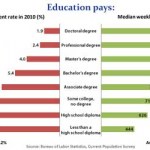SETI
Sometimes I think there are not abundant intelligent life forms wafting about the universe. We would see things in our careful, highly accurate, detailed looking at a sampling of the universe. But, I suppose we've only been scanning with super amazing instruments for a few years, and only scanning a small fraction of the universe. But certainly, in a decade or two we'll be able to say that radio-communicative or emitting intelligent life is either out there somewhere, or not likely to be. Absence of evidence will evolve into evidence for pessimism, at the very least.
Meanwhile we get these…
Tabby's Star - KIC 8462852 - remains one of the more interesting and mysterious objects in the sky.
There is a good update at "Updates on Boyajian’s Star" - Astrowright's blog and "Bradley Schaefer: Further Thoughts on the Dimming of KIC 8462852" at Centauri Dreams has the latest on the controversy over whether the star has undergone long term fading.
Update: "The Most Mysterious Star in the Galaxy" - another guest blog by Schaefer providing a good overview of the issues.
Ultimately to resolve this more data is needed.
There is a Kickstarter Project - "The most mysterious star in the Galaxy…
The ‘Nifty Fifty (times 4)’, a program of Science Spark, presented by InfoComm International, are a group of 200 noted science and engineering professionals who will fan out across the Washington, D.C. area in the 2014-2015 school year to speak about their work and careers at various middle and high schools.
Meet Nifty Fifty Speaker Dr. Dan Werthimer
The great debate continues: Are we the only intelligent life in the universe? We know that popular science fiction often portrays our Milky Way Galaxy as teeming with advanced civilizations engaged in interstellar communication, commerce,…
As our planet makes more and more noise, we can't help but wonder why no one is paying attention. Are we alone in the universe? Or alone in our desire to discover new worlds? PZ Myers says "Spaceship building is never going to be a selectively advantageous feature — it’s only going to emerge as a spandrel, which might lead to a species that can occupy a novel niche." Humanity could tread that path, following our dreams to the stars. But even then, we might only find extraterrestrials in the form of well-adjusted slime blobs, content in their otherworldly ecosystems.
If there are other tech-…
Day two of the New Frontiers wrap-up conference. This is a slow liveblog with more cosmology and life in the universe. Yesterday's summary is here
A couple of years ago, the Templeton Foundation funded the New Frontiers program to pose "Big Questions" in some areas of science.
This is a slow liveblog - part II will be tomorrow with more cosmology and life in the universe
Seed funding was provided to 20 investigators and small groups to start exploratory research, and, now, it is time to say what they found.
This follows up from the New Frontiers kick-off conference back in 2012.
We start the…
A couple of years ago, the Templeton Foundation funded the New Frontiers program to pose "Big Questions" in some areas of science.
This is a slow liveblog - part II will be tomorrow with more cosmology and life in the universe
Seed funding was provided to 20 investigators and small groups to start exploratory research, and, now, it is time to say what they found.
This follows up from the New Frontiers kick-off conference back in 2012.
The New Frontiers conference to report the hint of the beginning of the draft of the answers is under way... most of the investigators and about half of the…
The google+ hangout on SETI searches for KII and KIII aliens using WISE is archived on Youtube:
Enjoy
A google hangout this afternoon:
"Today, September 18, 2:00 PM
SETI Institute researchers Jill Tarter and Franck Marchis (host & moderator) will hangout with Jason Wright, professor of astronomy at Penn State, Matt Povich, professor of astronomy at Cal Poly Pomona and Freeman Dyson, theoretical physicist and mathematician at the Institute for Advance Study.
These scientists will discuss the potential for the WISE telescope to detect extraterrestrial super-civilizations that acquired a large energy supply by building a mega-structure to harvest the energy of their star("Dyson Sphere") or…
There were a number of interesting results reported today, the start of what promises to be an interesting week:
IR spectra of HR 8799 planets - Scharf at SciAm blogs reports on the Oppenheimer et al paper using the P1640 at the Palomar telescope.
Their interpretation of the rather low signal-to-noise low resolution spectra is that the outer two planets have little methane in their upper atmosphere and the inner planets do seem to have methane and that there is evidence for ammonia in the outer planets.
I suspect more data is needed.
HR8799 is an interesting system, I'm still not convinced…
Ok - I'm crowdsourcing the internet, because the google has failed:
there are two science fiction short stories that I need titles and authors for, source in anthology or collection would be better still.
1) humans in slower-than-light spaceship set out to colonize planet identified around nearby star. When they finally get there, they find the planet already colonized by humans, who had left after them but on a faster (ftl?) spaceship and arrived before them
2) humans expand around galaxy and find no intelligent life - finally contact is made, arrangements are set up to treat with aliens,…
Blows against supersymmetry and facebook.
Matthew Bailes continues ruminations at the Conversation - the general riff is on crowd sourcing and distributed computing, with a bit of bragging on The Beast they got down under.
Ok, I'm, just jealous.
I had not heard of Diaspora - be interesting to see if it can crowd out fb or other commercial social networks.
The Raspberry Pi I had indeed heard of, and will be acquisitioning. My kids are so looking forward to have their own computers... ;-)
But, what we really conclude, is that Matt needs to meet Charlie Stross for a quiet beer or three.
On a…
Continued slow liveblog of the New Frontiers in Astronomy and Cosmology Conference at the Franklin Institute.
Lunch is almost over and we are headed into the final session of research presentations, clearly saving the best for last...
I am also reminded why we have these meetings, in person, the chats during break and back and forth in sessions provides very dense information transmission and tight feedback loops on news.
Big Question IV - Are we Alone in the universe?
Or, are there other life and intelligence beyond the solar system?
1) Jonathan Lunine from Cornell on "The search for life…
In which we win an award from the New Frontiers in Astronomy Program.
The New Frontiers in Astronomy and Cosmology program announced its research grant award winners yesterday.
The last, but not least of the Big Questions solicited in the Call for Proposals, was:
Are we alone in the universe? Or, are there other life and intelligence beyond the solar system?
There were four awards in this "Astrobiology and SETI" category, focusing on different approaches in the search for life elsewhere in the Universe.
We got one:
"Constraining the Abundance of Kardashev Type II and III Civilizations From…
The New Frontiers in Astronomy and Cosmology program has
announced its Award winners!
The $4+ million in awards went to 20 scientists studying Big Questions on fundamental issues and 21 high school and university student essay prize winners.
The awards will be presented at a conference at the Franklin Institute in Philadelphia next week.
The program is funded by the Templeton Foundation as part of its celebration of the centennial of the birth of its founder, John Templeton.
The topics solicited for the Big Questions were very interesting:
What was the earliest state of the universe?
What…
Postdoctoral Scholar, Stellar and Exoplanetary Astrophysics and SETI
"Applications are invited for a postdoctoral research associate position to work with Prof. Jason Wright and collaborators.
The ideal applicant will have some combination of:
• experience working with large photometric datasets, especially in the near and mid-IR
• strong coding skills, in languages including IDL
• the ability to independently solve novel research problems, including the application of results from unfamiliar fields
• a desire to work with and assist in advising graduate and undergraduate students;
• a…
It is another hot and sultry friday, and that means it is time for the iPod iChing!
Oh, Mighty iPod One, what may come in the near term of our endless quest to seek Extraterrestrial Intelligence?
Woosh goes the randomizer.
Woosh.
The Covering: Peter and Wolf: The Story Begins - Prokoviev
The Crossing: Take It All - Adele
The Crown: Girlfriend is Better (Live) - Talking Heads
The Root: Vertigo - U2
The Past: Shadow Play - Joy Division
The Future: Downbound Train - Raul Malo
The Questioner: Crosseyed and Painless - Talking Heads
The House: Nú Er Glatt Í Hverjum Hól - Trad.
The Inside: I…
"Name one thing robots can't do in space that humans can!" was the challenge from a speaker at a meeting I attended many years ago.
"Have babies!" was the loud and prompt reply from a grad student friend of mine at the back, thereby winning the argument to great applause.
It is important to remember that while science and discovery is important, it is not the ontological basis for space exploration.
Space is, ultimately, about existential motivations. The science helps drive the motivation, and provides the information that enables space exploration, but is in many important ways not the…
First, I should say right away that the planet that has been in the news so much lately is not known to be "earth like" ... depending on what you think "earth like" is. What we know is that the planet orbits its star in a position that allows for the possibility that water on its surface could be liquid. But, the possibility that the planet has a "surface" ... as opposed to some increasingly dense gaseous layer like Neptune ... has not yet been established. Not that this would favor life one way or another. For all we know, getting life started on a hard crust covered earth is way harder…
By Dr. Gerry Harp, Senior Astrophysicist, Center for SETI Research, SETI Institute, and Gail Jacobs
Trained as a quantum mechanic, Dr. Gerry Harp was deeply interested in possibilities for using the multiple telescopes of the Allen Telescope Array to generate steerable "beams" on the sky -- beams that could be far smaller than any single antenna could produce. Such beams don't emit anything, but work in reverse by capturing only energy that comes from the sky in a certain direction. Gerry joined the SETI Institute in 2000, practically at the telescope's inception and uses the telescope for…
As you have undoubtedly heard from sources more overtly journalistic than this one, SETI is back online!
After federal and state financial cutbacks forced the institute's shiny new Allen Telescope Array (ATA) into indefinite hibernation earlier this year, cosmically-minded geeks all over the globe donated money in droves, bringing the search for extraterrestrial life back from oblivion. Over $200,000 in donations from thousands of fans -- including Contact's own Jodie Foster, science-fiction writer Larry Niven, and Apollo 8 Astronaut Bill Anders -- will get science operations up and running…




